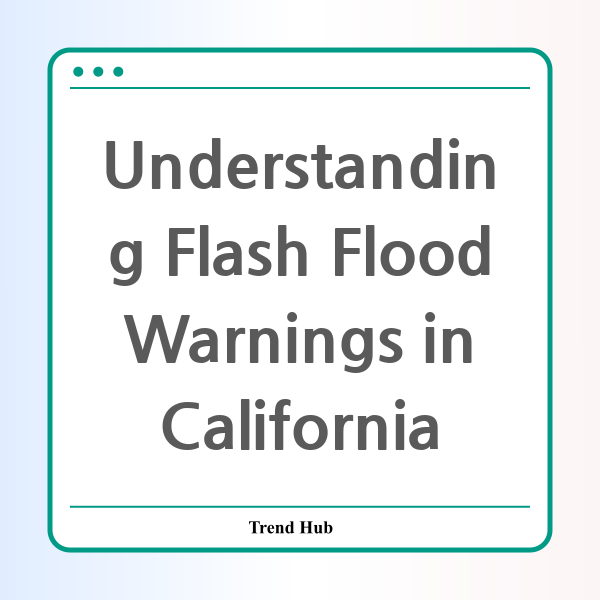* This website participates in the Amazon Affiliate Program and earns from qualifying purchases.

Are you prepared for the unpredictable weather that can lead to flash floods in Southern California? Amidst the recent rise in climatic turmoil and extreme weather patterns, understanding flash flood warnings has never been more crucial. With the National Weather Service predicting rainfall in the upcoming week, it's important to know how these weather events can impact you.
Next week, Southern California is bracing for rain, which is expected to return from Tuesday through Thursday, with forecasts indicating anywhere from a quarter to an inch of rain, potentially exceeding this at higher elevations. Unlike the stormy conditions seen recently, which prompted significant flash flood warnings mainly due to the intensity of the previous storm, this incoming system is deemed warmer. As NWS Meteorologist Lisa Phillips notes, this warmer system is unlikely to unleash the same intensity of rainfall that leads to rapid runoff and debris flows, thus mitigating some flash flood risks.
It's essential to remain vigilant, however. Flash floods can occur with little warning, especially in regions with steep terrain or recent burn scars from wildfires, which are more susceptible to debris flows. Given the preceding dry conditions, the ground may not absorb moisture efficiently, increasing the risk of flash flooding despite lower anticipated rainfall amounts.
Earlier this month, areas like Malibu and the Palisades faced flash flood warnings after the weather system inundated regions with rain. With mud and debris flows leading to the complete closure of Topanga Canyon Boulevard, we are reminded of how quickly conditions can change and escalate into a dangerous situation. Understanding flash flood warnings involves more than just recognizing the term; it means knowing what to do when a warning is issued and how to prepare for these swift and potentially life-threatening conditions.
In light of recent environmental studies, the relationship between climate conditions and the frequency of such weather events is becoming increasingly apparent. A report indicated that the conditions leading to recent Southern California fires were significantly exacerbated by climate change, which made extreme weather events, including prolonged dry seasons and intense fire conditions, more probable.
The report's findings revealed that regions like Los Angeles now experience about 23 additional days of dry weather each year compared to pre-industrial times. This alarming trend underscores the importance of staying informed about weather patterns and being prepared for events like flash floods, especially as climate change continues to alter our natural environment.
As residents in flood-prone areas, it is vital to pay attention to local weather alerts and to understand what a flash flood warning entails. Take the initiative to create an emergency plan before any warnings are issued. This should include knowing your evacuation routes, preparing an emergency kit, and being aware of your surroundings during significant weather changes.
Moreover, staying educated on the implications of climate change and its effect on local weather is crucial. A better understanding of how these systems work will equip you to respond effectively when the unexpected occurs. With climate change predicted to continue influencing our weather patterns, the frequency and intensity of flash floods may also increase in the future.
As we move forward, it is imperative that everyone takes flash flood warnings seriously and remains proactive in their preparedness efforts. Knowing the warning signs, understanding the risks, and having an action plan can save lives and property.
In conclusion, while forecasting may become more complex due to climate change, your response to weather warnings does not have to be. Stay informed, stay prepared, and help build a more resilient community in the face of our changing climate.
* This website participates in the Amazon Affiliate Program and earns from qualifying purchases.